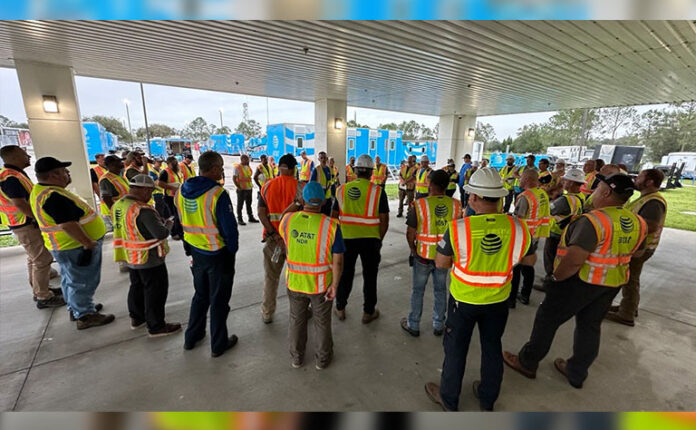Wireless and wireline service providers continue to make progress in repairing and restoring connectivity in the wake of hurricanes Helene and Milton.
According to figures reported to the Federal Communications Commission as of Monday, 7.2% of sites continued to be out in affected areas of North Carolina and Tennessee. That was a slight uptick from 5.1% the previous day. Mountainous terrain and washed out roads and bridges have combined to severely limit telcos’ ability to reach and repair their network assets in North Carolina and Tennessee.
Meanwhile, networks in Florida post-Milton were in a sufficient state of recovery that the FCC opted to deactivate disaster response reporting requirements for areas impacted by that storm as of Monday. According to the FCC’s numbers, carriers had whittled down the percentage of sites out to around 2%, and even the highly impacted counties of Pinellas and Hillsborough only had about 6% of their sites out. The Florida county with the highest percentage of sites still out was Union, with 10% of sites down as of yesterday.
In their most recent updates, the national carriers highlighted:
-T-Mobile US said that fewer than 2% of its customers in Florida are without consistent connectivity post-Milton, and that it has made nearly 1,000 site assessments and deployed and/or refueled more than 600 generators. The carrier said that it is focused on impacted sites in Pinellas, Hillsborough and Volusia counties, and that it is weighing portable satellite dishes and microwave equipment for some sites, where extensive fiber damage means that their backhaul connections will take longer to restore.
-AT&T said that it had responded to more than 30 requests for deployable FirstNet assets in areas impacted by Hurricane Milton. The carrier called out its aerial Cell on Wings, aka flying COWs, as being “vital in reconnecting areas with disrupted infrastructure.”
The carrier has supplemented its Helene response in North Carolina by recently adding a Mobile Connectivity Center, in partnership with the non-profit Technology Disaster Resource Center (ITDRC), which provides both device charging and access to 16 computers.
-Verizon has made $2 million in donations for relief efforts and said that network-wise, it continues to refuel generators to ensure that sites stay online. Where cell sites have already been restored post-Milton, the carrier said, its engineers are focused on getting the network back to its usual, pre-storm performance levels.
In related news, materials mining for semiconductors and fiber-optics in the devastated North Carolina town of Spruce Pine is beginning to come back online. Quartz mine Sibelco, which provides high-purity quartz for use in semiconductors and solar panels, announced that it has restarted shipments to customers and that “both production and shipments are progressively ramping up to full capacity.”
“I want to thank our employees for their remarkable resilience and teamwork under these extremely difficult circumstances,” said Sibelco CEO Hilmar Rode in a statement. “While the road to full recovery for our communities will be long, restarting our operations and resuming shipments to customers are important contributors to rebuilding the local economy.”
TQC, the other major quartz supplier in the Spruce Pine area, has said that while all of its employees are safe, it is still evaluating when it will be able to resume operations—but that supply chain planning prompted by the Covid-19 pandemic meant that it was confident that it would be able to meet demand.

